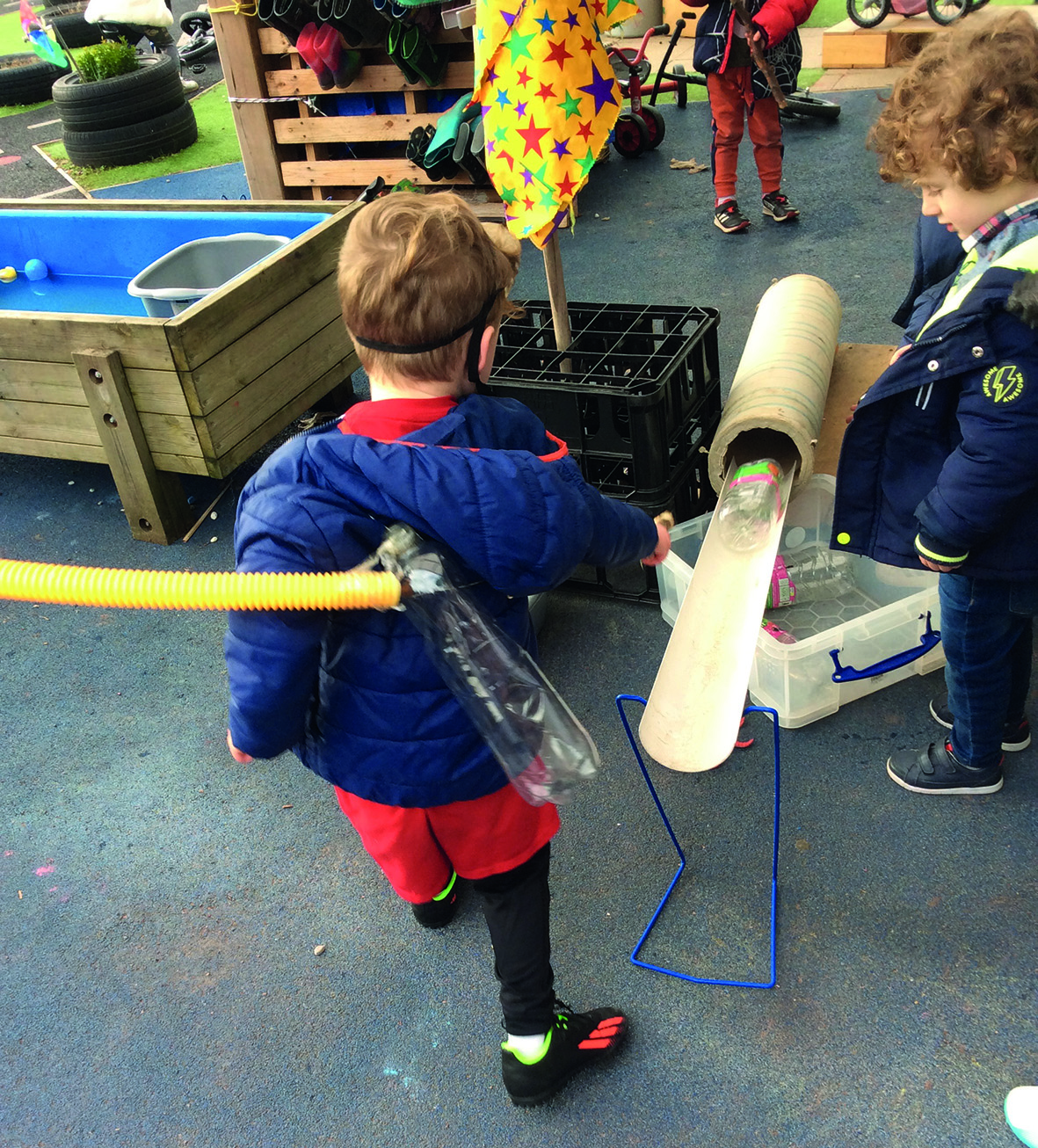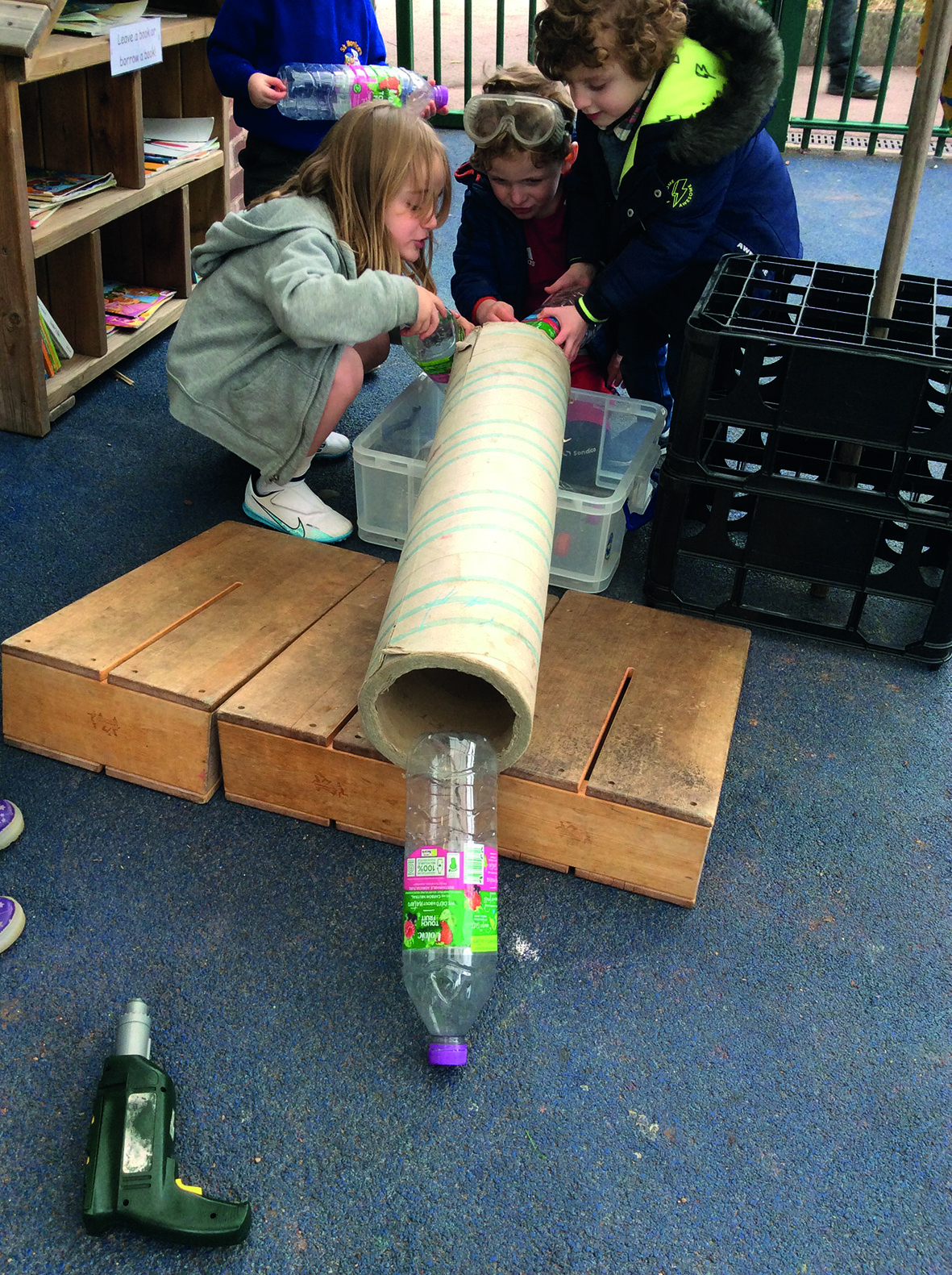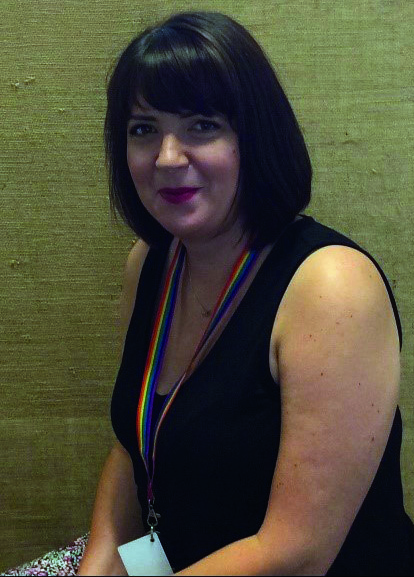
Teachable moments are events or experiences presenting opportunities to extend knowledge, find out something new, introduce new vocabulary or learn a new skill.
When done well, responding to teachable moments is a spontaneous, natural way for adults to support or extend children's learning in an informal, natural, relaxed and fun way. Recognising and responding to teachable moments helps us to meet the Early years foundation stage (EYFS) statutory framework:
‘1.11 Practitioners must consider the individual needs, interests, and development of each child in their care, and must use this information to plan a challenging and enjoyable experience for each child in all areas of learning and development…
‘1.14 …Children learn by leading their own play, and by taking part in play which is guided by adults. Practitioners need to decide what they want children in their setting to learn, and the most effective ways to teach it.’
However, adults need to be skilled and knowledgeable to spot teachable moments and know when to observe and let the play pan out and when it would be useful to interact to enhance or extend learning.
RESPONDING TO THE UNIQUE CHILD
This is one of the guiding principles of the EYFS which requires adults to get to know each child's interests, to understand each child's age and stage of development and plan interesting, safe learning opportunities to help progress their learning and development. Parents/carers also play an important part here by informing us what their children might have been doing over the weekend or if their child has a new favourite book, for example.
Catching and responding to teachable moments requires all adults to understand typical child development for the age group of children they are working with. This will help them to decide what they want children to learn and how to implement it. Implementing it does not always have to mean an adult-led activity; it can simply be how you might enhance your continuous provision or provide a play provocation.
ENABLING ENVIRONMENTS
 Teachable moments are most likely to happen where children are accessing quality continuous provision with open-ended resources. However, children's play is also inspired by their first-hand experiences. You may find the children recreating their favourite story, or an experience such as visiting the seaside, farm or zoo is a catalyst for their play.
Teachable moments are most likely to happen where children are accessing quality continuous provision with open-ended resources. However, children's play is also inspired by their first-hand experiences. You may find the children recreating their favourite story, or an experience such as visiting the seaside, farm or zoo is a catalyst for their play.
There are endless examples of provocations to play; they should entice children's natural curiosity to play and learn. Provocations can provide fun ways to explore, be creative, use their imaginations, categorise and problem solve, etc.
Provocations are opportunities for children to play and learn rather than an adult-led activity, but there may be teachable moments as investigations occur. The children may make links recalling something they have previously done, a story, or they may ask questions. Sometimes this may lead to a sustained shared thinking moment where a child works with an adult or another child to solve a problem, find out more about something, learn something new or clarify a concept. There may be opportunities to model new vocabulary or to use a book or tablet to research something together.
Provocations could also be a starting point to explore something new. For example, as the season changes to spring, you may provide some compost and seeds with gardening tools and a point of interest book connected to spring or growing things. Depending on how the children use the resources, this may lead to visiting a garden centre and planting seeds to grow flowers or food to learn more about the natural world. Perhaps you could look at the seeds in the fruit at snack time and plant an apple pip or place the top of a carrot in a saucer of water to watch it regrow.
Weekly team meetings might be useful to discuss your observations and any interests you may have seen and decide how to respond. This may lead to enhancing your continuous provision.
PLANNING – BEING FLEXIBLE
 Written planning is no longer a focus of an Ofsted inspection; inspectors want to know about your curriculum intent, how you implement this and the impact it is having on children's learning and development.
Written planning is no longer a focus of an Ofsted inspection; inspectors want to know about your curriculum intent, how you implement this and the impact it is having on children's learning and development.
A lot of settings are adopting a ‘planning in the moment approach’, where learning is spontaneously provided by adults based on individual children's interests. I have seen many examples of this working very well, but it relies on every member of your team being able to spot teachable moments; observing those moments of curiosity, knowing each child well and knowing what stage of child development they are at, so that they can turn these magic moments into appropriate and meaningful opportunities to extend learning.
On the other hand, I am also seeing many examples of children playing where staff are not finding the teachable moments to interact and extend, and sometimes staff's interactions take over the play and learning, interfering with children's play.
Knowing your team is crucial. Some members of your team may need coaching and others may be visual learners and need some written planning as an outline. Plans need to be flexible, responding to the children's needs and interests regardless of the approach you choose. Just because inspectors are not looking at planning, it does not mean that you can’t have some written plans if they are useful to you/your team. The choice is yours!
CASE STUDY: St Monica's Nursery
 Emma Lightfoot, nursery leader at St Monica's Nursery
Emma Lightfoot, nursery leader at St Monica's Nursery
‘After singing a pirate song during rhyme time, two children went out into the garden and built a pirate ship using large wooden blocks. A member of staff observed the children happily role playing together and asked what they were doing. “We are pretending to swim in the water, but wait a minute, how can I breathe underwater?”
‘The adult sat down next to them. “To swim in the ocean you might need scuba diving gear, do you know what that is?’’ The children weren’t sure. The adult got out the iPad and searched for a video showing divers in the sea. The children wanted to build an oxygen tank. They went to the make and do table to have a go.
‘The children picked some large pop bottles and an old hose pipe. While constructing their oxygen tanks, adults talked to the children about why we can’t breathe under the water. Once the children were happy with their creation, they went outside to try out their oxygen tanks. As the children pretended to swim, the adult asked, “What can you see under the water?” “I can’t see anything.” They went to the water tray to get the sea creatures out. Placing them on the ground, they pretended to swim among the fish.
The children went back to this activity after lunch but took a different direction and included a cannon on the pirate ship. The adult and children used the iPad to research what cannons looked like and how they work. The children used a large tube and plastic bottles to recreate this in their play.
Sue Asquith is a freelance early childhood consultant and published author









